Are you looking to streamline your vendor selection process? Writing a compelling request for proposals (RFP) can make all the difference in attracting the right partners for your business. In this article, we'll guide you through the essential elements of a vendor proposal letter that resonates. Stick around to discover tips and templates that will help you craft the perfect request!
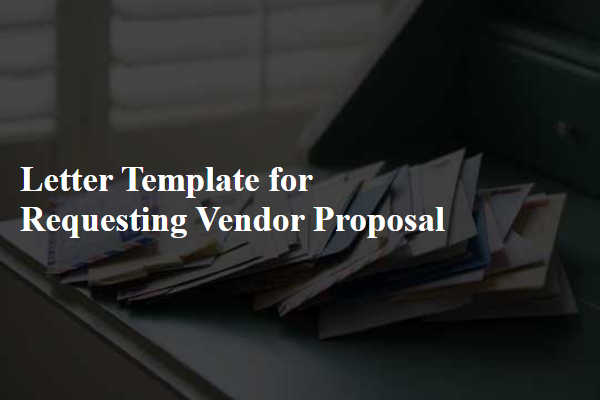
Clear Subject Line
A clear and well-defined subject line enhances the organization of vendor communications. For instance, "Request for Proposal: [Project Name or Service] - Due [Due Date]" ensures recipients understand the context immediately. Including the project name (e.g., "New Marketing Campaign") and a specific due date (e.g., "October 15, 2023") conveys urgency and clarity. This subject line format streamlines vendor responses and fosters efficient project management processes within procurement departments. Using concise language improves focus and allows team members to prioritize requests effectively.
Introduction and Purpose
Businesses often seek vendor proposals to evaluate potential partnerships for products or services. The introductory section should clearly outline the organization's needs and the specific goals of the proposal request. For example, a company might require a proposal from a packaging vendor (such as a company specializing in sustainable materials) to improve its environmental footprint while reducing costs. The purpose of the request should be to gather detailed information about pricing, delivery options, and quality assurances from potential vendors. This information serves as a foundation for comparing different proposals and making informed decisions that align with business objectives.
Specific Requirements and Criteria
A vendor proposal request must clearly outline specific requirements and criteria to ensure potential suppliers understand the expectations. Details such as product specifications (dimensions, materials, and functionalities) must be defined to guide vendors in their submissions. Additionally, criteria for evaluating proposals should include pricing structures, delivery timelines, and quality standards, essential for assessing the ability to meet operational needs. Including compliance requirements with industry regulations or certifications (such as ISO 9001) can help streamline the selection process. Clear deadlines for submission (e.g., by December 15, 2023) and the decision-making timeline (e.g., final selections by January 10, 2024) provide a structured framework for potential vendors. Finally, mentioning the evaluation process for proposals, such as scoring systems or review committee details, assures transparency and encourages considerate submissions from suppliers.
Proposal Submission Guidelines
The proposal submission guidelines outline the structured approach for vendors to submit their proposals for consideration in response to a Request for Proposal (RFP). Vendors must include a detailed project description, timelines, and specific deliverables. Each proposal should adhere to a maximum length of 20 pages, formatted in 12-point font, with 1-inch margins. Submissions must be sent electronically in PDF format to the designated email address provided in the RFP by the deadline of December 1, 2023. In addition, vendors should include references from at least three previous projects completed within the last five years, showcasing relevant experience. Proposals must also include a comprehensive budget breakdown detailing cost estimates for each phase of the project. Furthermore, any questions regarding the proposal can be submitted until November 15, 2023, for clarification.
Contact Information and Deadline
In preparing for a vendor proposal request, ensure to prominently display contact information, including email address, phone number, and physical address, for easy communication. Specify critical submission deadlines, reflecting project timelines, which may dictate the proposal due date. Establish clarity about any required formats or information that must be included in the proposal. Providing potential vendors with complete and precise instructions improves overall efficiency in receiving quality proposals. Clear guidelines facilitate better responses and align vendor capabilities with organizational needs.

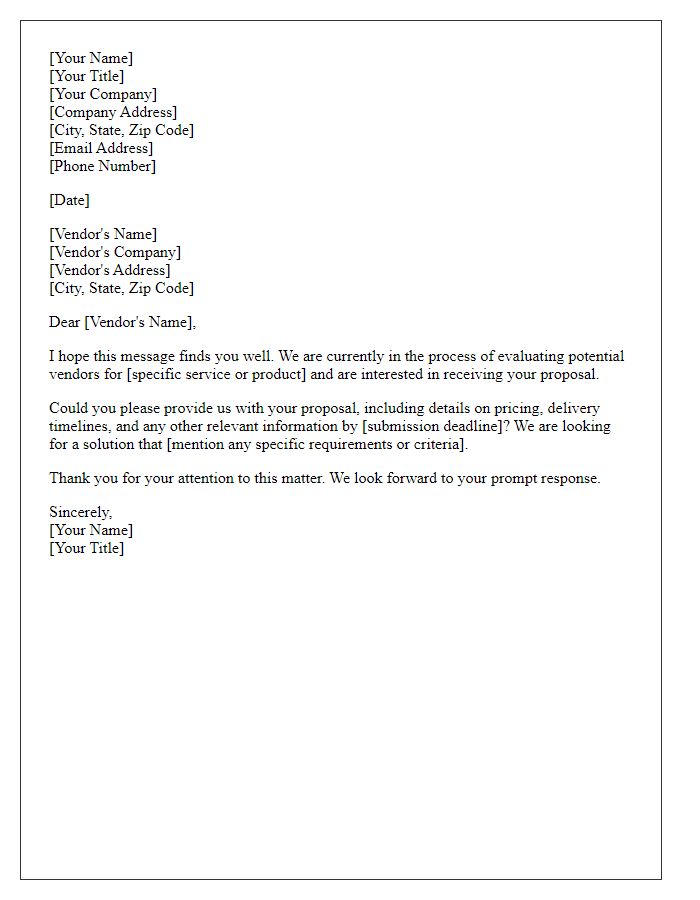
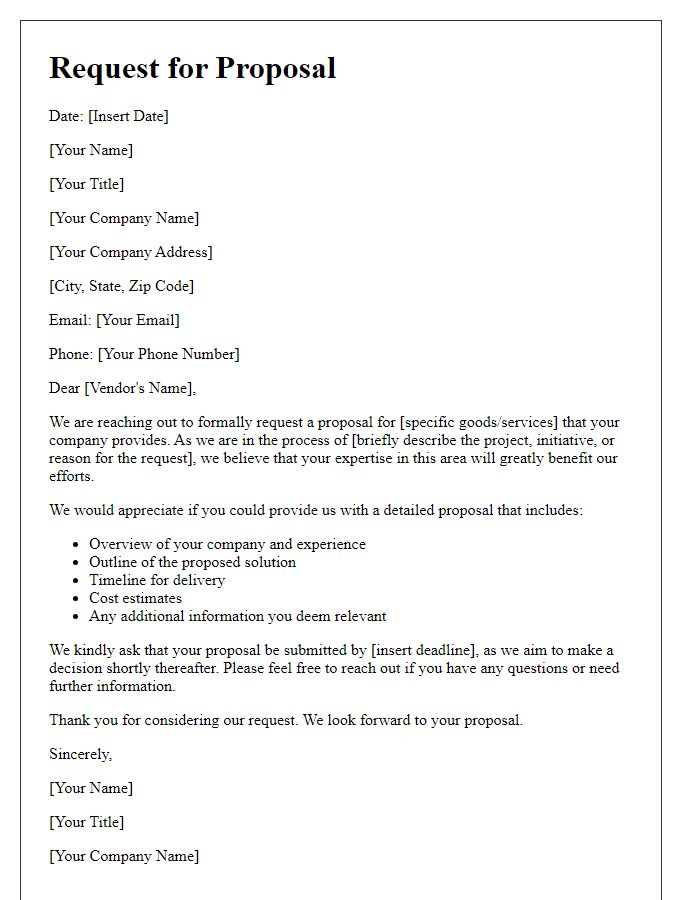
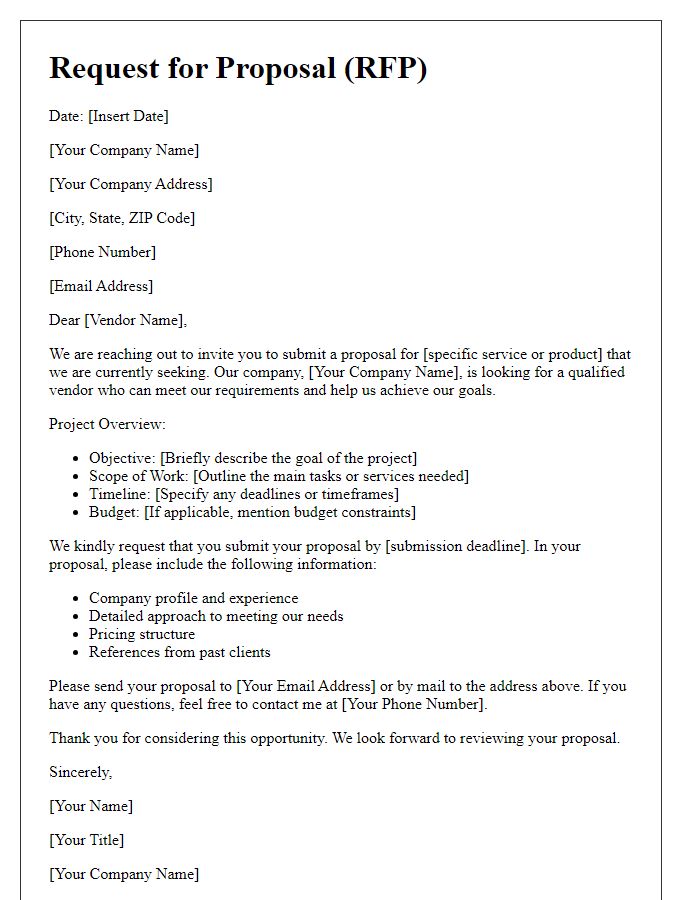
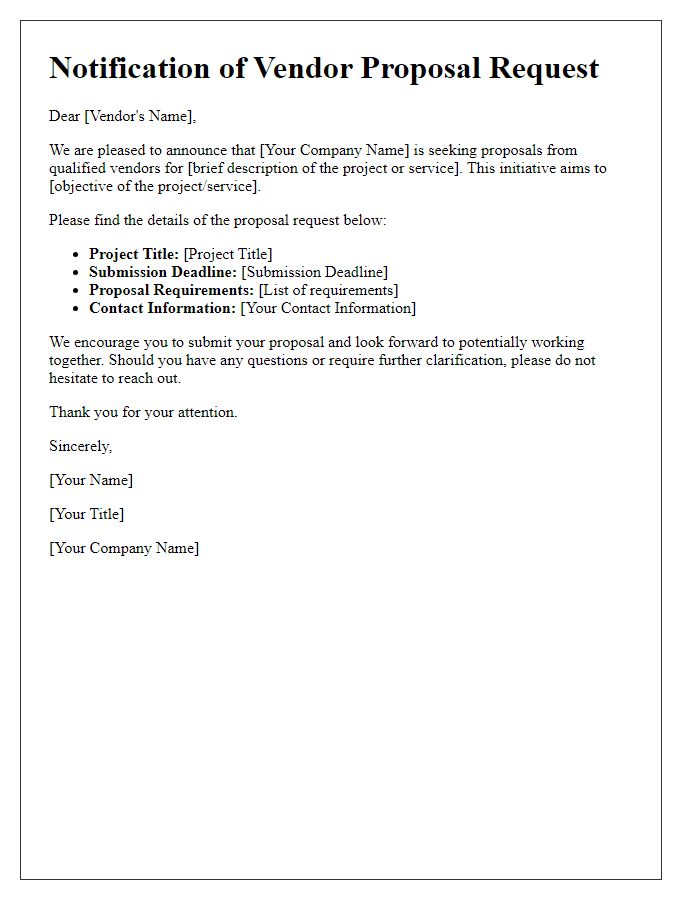
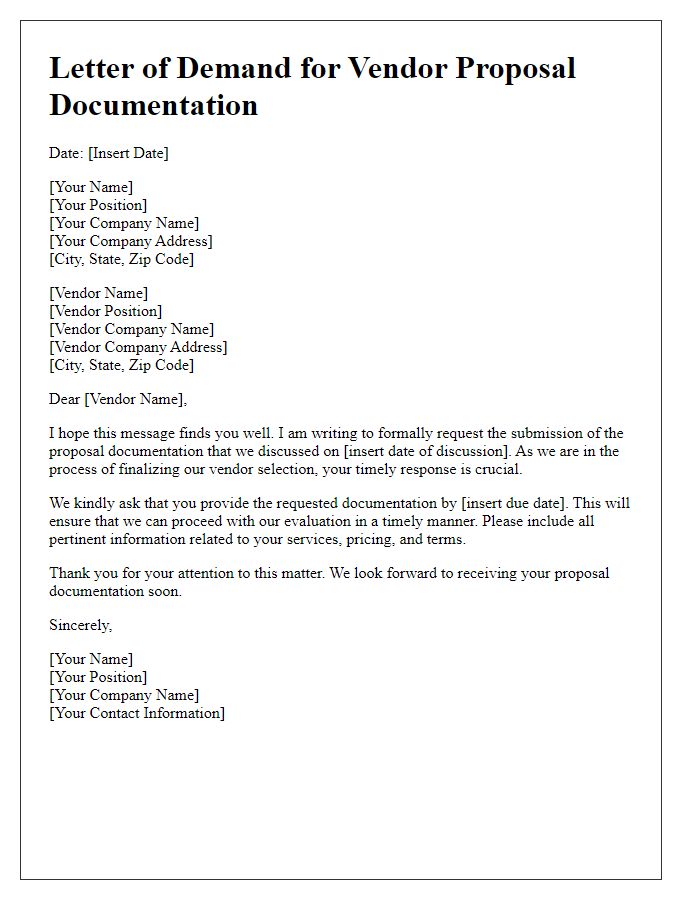
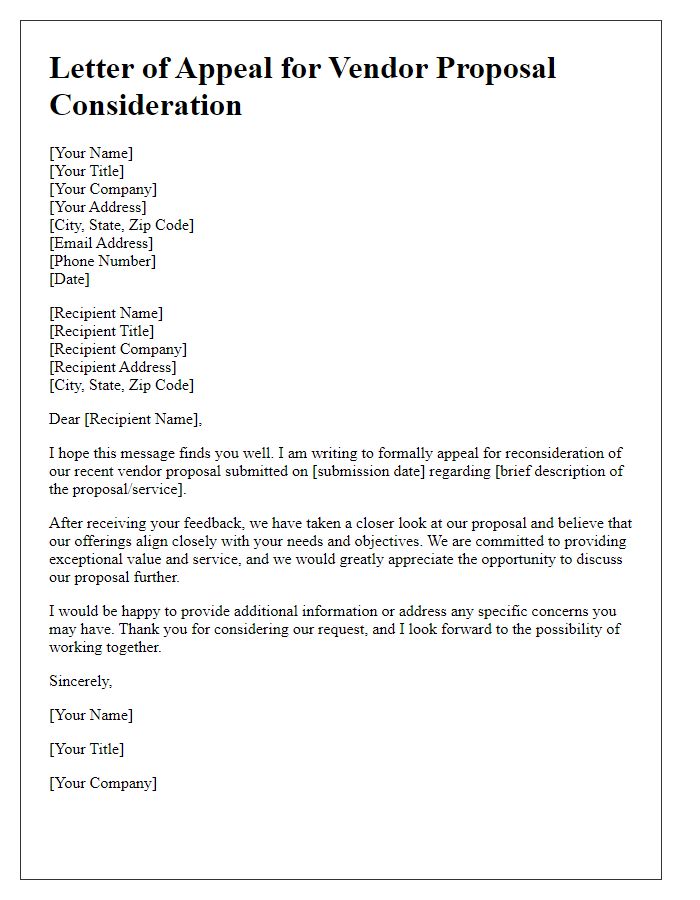
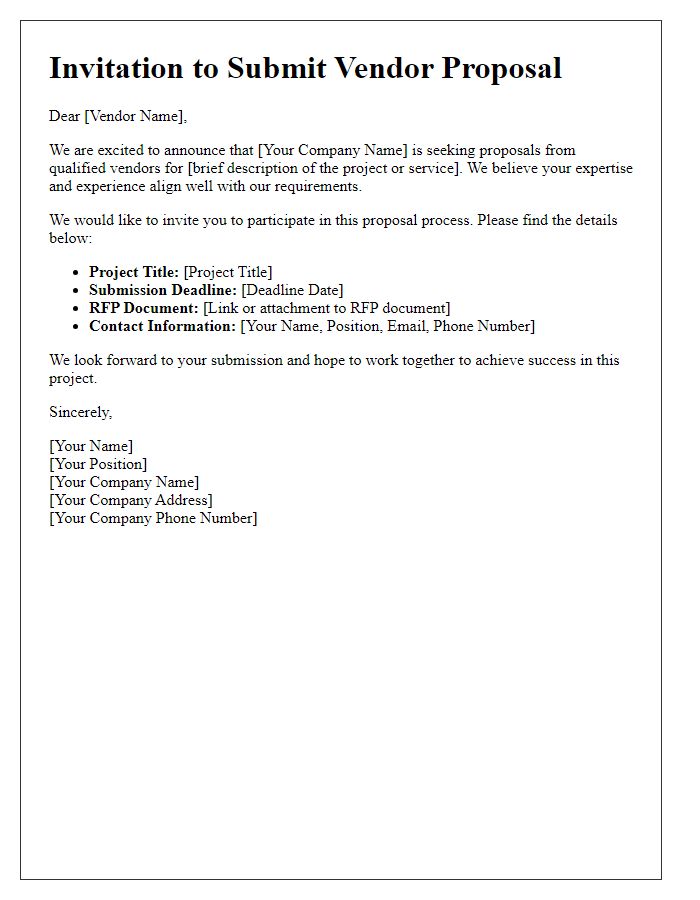
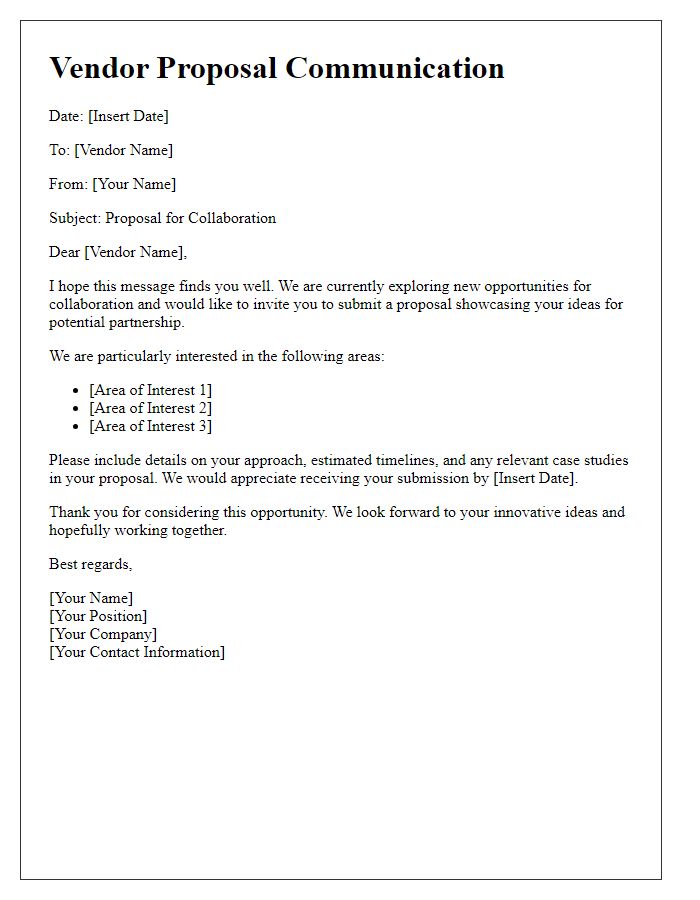
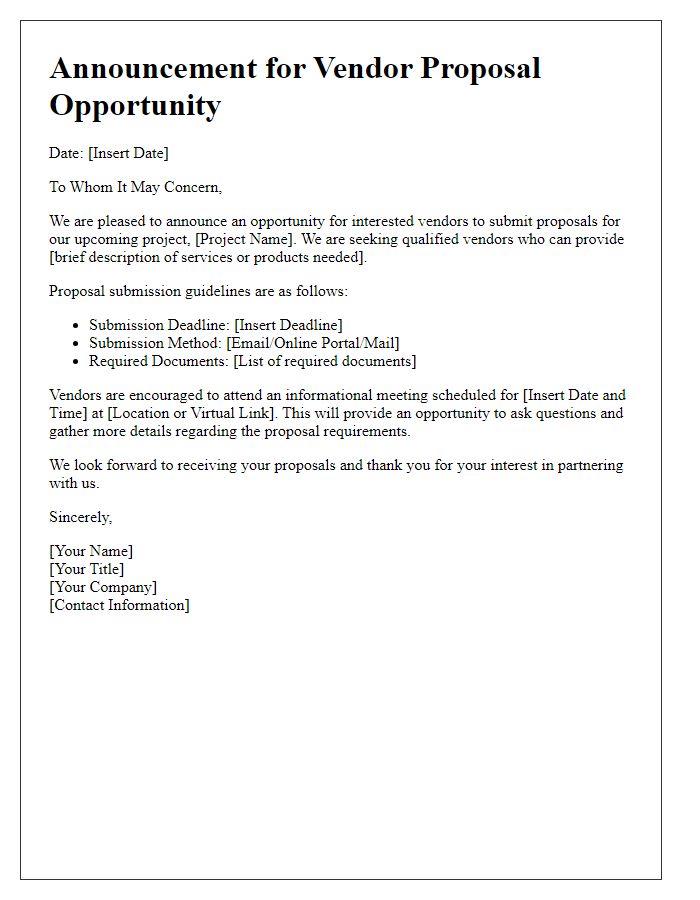
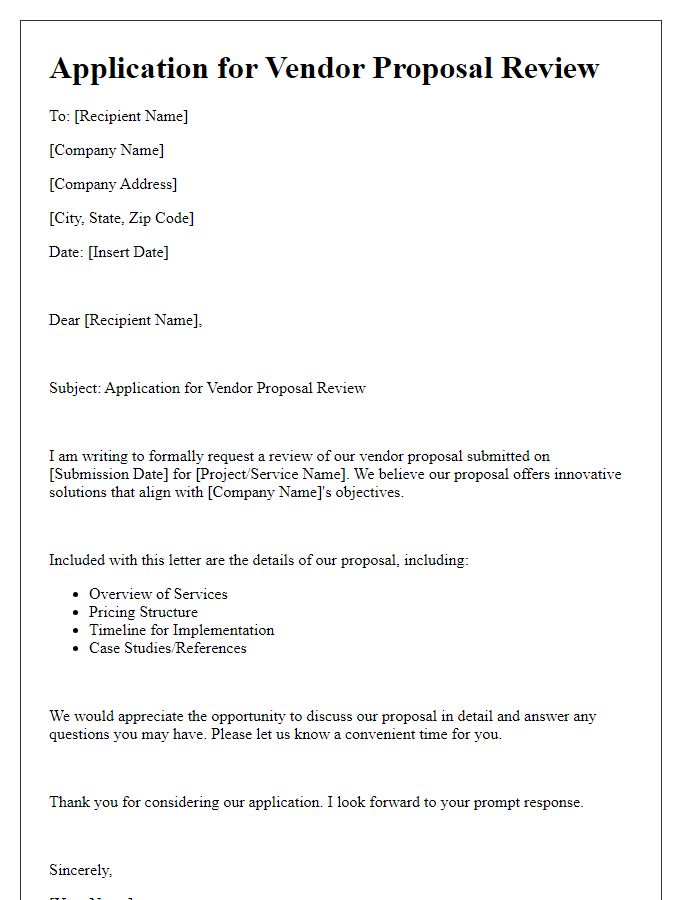

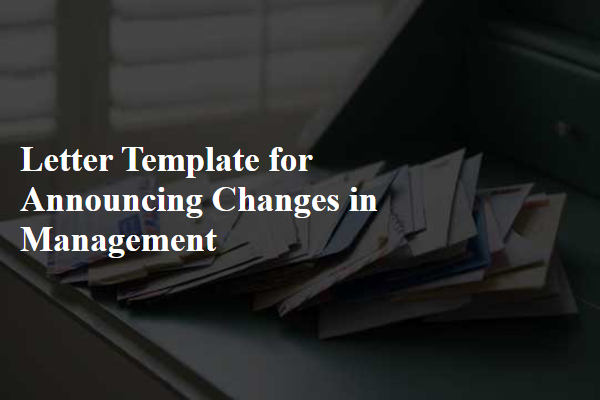
Comments